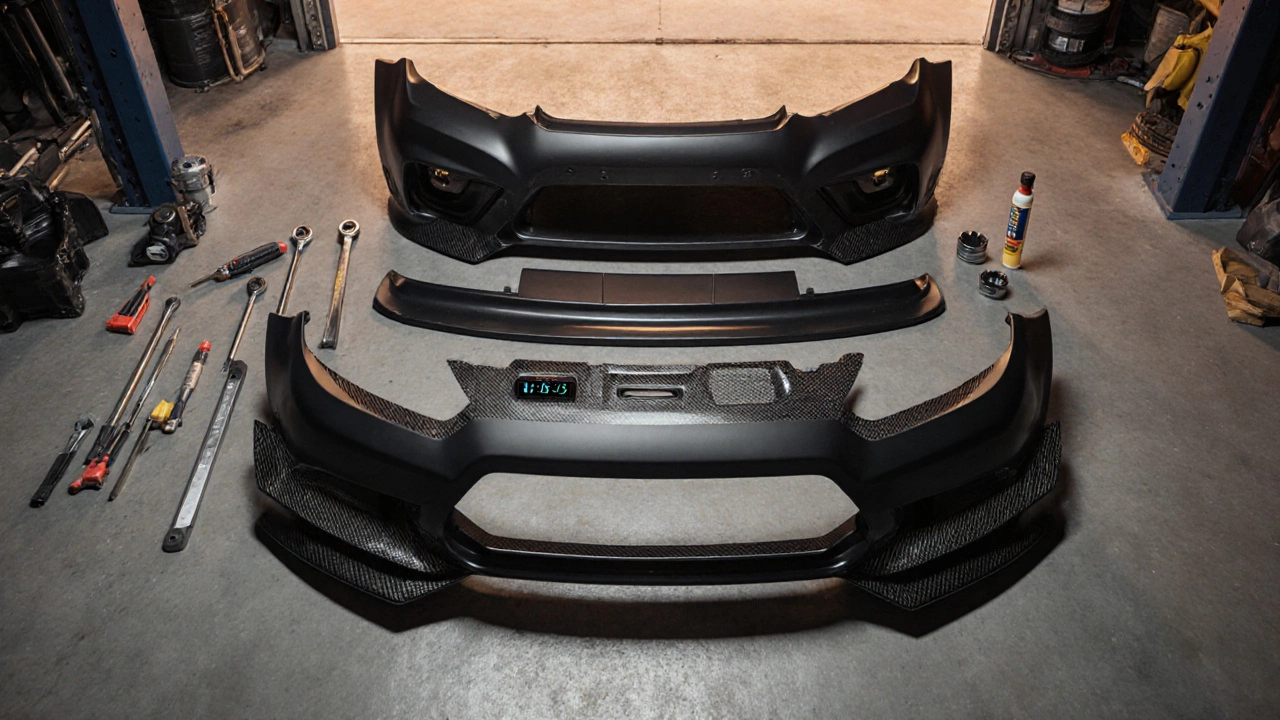When working with Fit Body Kit, a set of aftermarket panels that reshape a vehicle’s exterior and can improve aerodynamics. Also known as custom body kit, it lets owners give their car a unique stance while balancing style and function.
The first step is understanding the Body Kit Components, bumpers, side skirts, spoilers, and diffusers that together form the visual package. Each piece adds weight and changes airflow, so choosing the right material—fiberglass, carbon fiber, or ABS plastic—directly affects both look and performance. Next up are Lowering Springs, stiffened suspension springs that drop ride height to match the kit’s design. They improve the visual fit by reducing gaps between the wheel and the fender, but they also raise the car’s center of gravity and can stiffen the ride. Because of that, a proper Suspension Alignment, the adjustment of camber, caster and toe after any height change becomes essential. Without alignment, you’ll notice uneven tire wear and unpredictable handling.
Putting these pieces together creates a chain of cause and effect: the fit body kit encompasses the right components, which require suitable lowering springs, and those springs demand a precise suspension alignment. Ignoring any link in that chain usually leads to poor fit, noisy wind buffeting, or even safety issues. For many enthusiasts, the next question is whether the kit will boost aerodynamic performance. A well‑designed kit can lower drag and increase downforce, especially if the spoiler and diffuser are sized for the car’s speed range. However, adding large spoilers without proper tuning may create excess lift at high speeds, negating the intended benefit.
Budget also plays a big role. Cheap kits often use thin plastic that warps over time, while premium carbon fiber parts stay rigid but cost a lot more. In practice, many owners start with a budget-friendly set of components, then upgrade to lighter materials once they’re sure the fit works with their suspension setup. This staged approach lets you test the visual impact and handling changes before committing big money. It also gives you time to research the best aftermarket shops for installation—professional fitters know how to prep the surface, seal seams, and align the panels to avoid paint‑chip gaps.
Installation itself is a hands‑on process. Most kits require stripping the factory bumpers, drilling mounting points, and sometimes welding reinforcement brackets. If you’re not comfortable with metalwork, a reputable installer will handle the heavy lifting while you focus on choosing the finish—matte, gloss, or carbon‑look wrap. After the kit is mounted, a final alignment check is non‑negotiable. Even a small shift in the rear camber can cause the car to pull to one side, so a wheel‑shop should verify all angles before you hit the road.
Beyond the hardware, there’s the legal side. Many regions have rules about bumper protrusion, spoiler height, and overall vehicle width. Before you order or install, double‑check local regulations to avoid fines or failed inspections. In the UK, for example, any modification that alters a vehicle’s external dimensions must be approved by an approved examiner. The same principle applies elsewhere—knowing the law saves you from costly re‑work later.
Finally, think about maintenance. Body kit panels are exposed to road debris, sun, and weather. Regular cleaning with a pH‑balanced shampoo prevents oxidation, while a quick wax on fiberglass or carbon parts keeps the finish shiny and protects against UV damage. If you notice cracks or loose bolts, address them early to maintain both the aesthetic and the aerodynamics you worked hard to achieve.
Armed with this overview, you can now dive into the specific articles below. They cover everything from budget‑friendly lowering methods to detailed aerodynamics tests, giving you the practical knowledge needed to make a fit body kit work for your ride.

Find out how long it takes to fit a body kit, factors that affect install time, DIY vs professional options, and a handy checklist to avoid common delays.